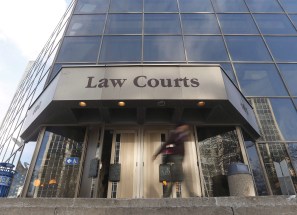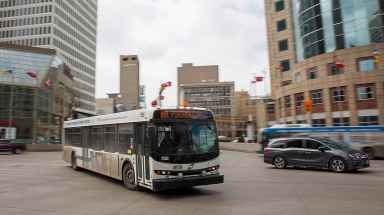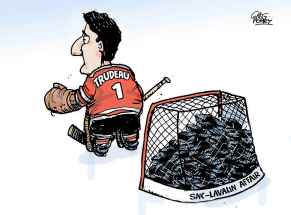Median wait time at Winnipeg hospitals rose in February
Read this article for free:
or
Already have an account? Log in here »
To continue reading, please subscribe:
Monthly Digital Subscription
$0 for the first 4 weeks*
- Enjoy unlimited reading on winnipegfreepress.com
- Read the E-Edition, our digital replica newspaper
- Access News Break, our award-winning app
- Play interactive puzzles
*No charge for 4 weeks then price increases to the regular rate of $19.00 plus GST every four weeks. Offer available to new and qualified returning subscribers only. Cancel any time.
Monthly Digital Subscription
$4.75/week*
- Enjoy unlimited reading on winnipegfreepress.com
- Read the E-Edition, our digital replica newspaper
- Access News Break, our award-winning app
- Play interactive puzzles
*Billed as $19 plus GST every four weeks. Cancel any time.
To continue reading, please subscribe:
Add Free Press access to your Brandon Sun subscription for only an additional
$1 for the first 4 weeks*
*Your next subscription payment will increase by $1.00 and you will be charged $16.99 plus GST for four weeks. After four weeks, your payment will increase to $23.99 plus GST every four weeks.
Read unlimited articles for free today:
or
Already have an account? Log in here »
Hey there, time traveller!
This article was published 28/03/2019 (2453 days ago), so information in it may no longer be current.
While emergency department and urgent care wait times were longer in February than one month, and one year, prior, the Winnipeg Regional Health Authority is urging patients to look at the big picture when it comes to evaluating the health-care system’s efficiency.
The median wait time at Winnipeg hospitals last month was 2.15 hours, compared with 1.87 hours in January. In February 2018, the median wait was 1.88 hours.
Krista Williams, chief health operations officer for the WRHA, pointed out the median waits are better than they were in February 2016 or 2017, however.
Phase 1 of Winnipeg hospital consolidation began in October 2017, and Phase 2 is scheduled to finish this fall, with the closure of Concordia Hospital’s ER in June and the Seven Oaks General Hospital ER in September.
 !function(e,t,s,i){var n=”InfogramEmbeds”,o=e.getElementsByTagName(“script”)[0],d=/^http:/.test(e.location)?”http:”:”https:”;if(/^/{2}/.test(i)&&(i=d+i),window[n]&&window[n].initialized)window[n].process&&window[n].process();else if(!e.getElementById(s)){var r=e.createElement(“script”);r.async=1,r.id=s,r.src=i,o.parentNode.insertBefore(r,o)}}(document,0,”infogram-async”,”https://e.infogram.com/js/dist/embed-loader-min.js”);
!function(e,t,s,i){var n=”InfogramEmbeds”,o=e.getElementsByTagName(“script”)[0],d=/^http:/.test(e.location)?”http:”:”https:”;if(/^/{2}/.test(i)&&(i=d+i),window[n]&&window[n].initialized)window[n].process&&window[n].process();else if(!e.getElementById(s)){var r=e.createElement(“script”);r.async=1,r.id=s,r.src=i,o.parentNode.insertBefore(r,o)}}(document,0,”infogram-async”,”https://e.infogram.com/js/dist/embed-loader-min.js”);
Williams said the WRHA expected an adjustment period for staff and patients would be necessary, which would thereby affect wait times. She couldn’t say Thursday when that adjustment period may end.
“There’s no question I would have wanted to see better wait times for February. But I also need to be realistic that we’re making the biggest changes in our system and there have been many variables that have impacted us in February," Williams told reporters.
Some of the contributing factors include a higher number of people using methamphetamine presenting to ERs (on average, nine per day last month), a record number of ambulances coming from the city and rural Manitoba to Winnipeg ERs (168.5 daily on average last month), and more sick patients staying in hospital longer, thanks in part to flu season.
Williams said the WRHA is investigating reasons why ambulance numbers are up, and she couldn’t provide any pre-preemptive guesses.
"The staff have worked very hard in our emergency departments and urgent care to do the best care they can and manage the increase of volumes and sick patients, so I have to commend them on the work that they’re doing," she said.
"It is disappointing (the wait time numbers), but I think we have to look at all the factors that have impacted it and once again, it’s really important that we complete the Phase 2 of consolidation and that will be a real opportunity then to make real improvements in our overall… wait times."
In a prepared statement, Manitoba Health Minister Cameron Friesen also said the numbers "are not where we want them to be."
"However, even with this spike, we will note that there has been a 22-minute improvement in emergency wait times since the Healing Our Health System plan was implemented in April 2017, when compared to the previous three-year period," he wrote.
"While we have been given indications that March wait times will also be similar (to February), we nevertheless expect numbers to subside in the months ahead and will be further bolstered as transformation of the health-care system continues."

!function(e,t,s,i){var n=”InfogramEmbeds”,o=e.getElementsByTagName(“script”)[0],d=/^http:/.test(e.location)?”http:”:”https:”;if(/^/{2}/.test(i)&&(i=d+i),window[n]&&window[n].initialized)window[n].process&&window[n].process();else if(!e.getElementById(s)){var r=e.createElement(“script”);r.async=1,r.id=s,r.src=i,o.parentNode.insertBefore(r,o)}}(document,0,”infogram-async”,”https://e.infogram.com/js/dist/embed-loader-min.js”);
NDP health critic Bernadette Smith was less optimistic.
"(Premier Brian) Pallister’s plan for our health-care system is clearly failing. Yet another month of skyrocketing wait times — and a significant increase since he began to close ERs and cut services," Smith said in a prepared statement.
"First, he blamed the flu; now, he is blaming staff. It’s time the premier admit his rushed plan to close Concordia and Seven Oaks isn’t working. Instead of saving money, he should focus on improving care for patients."
jessica.botelho@freepress.mb.ca
Twitter: @_jessbu









